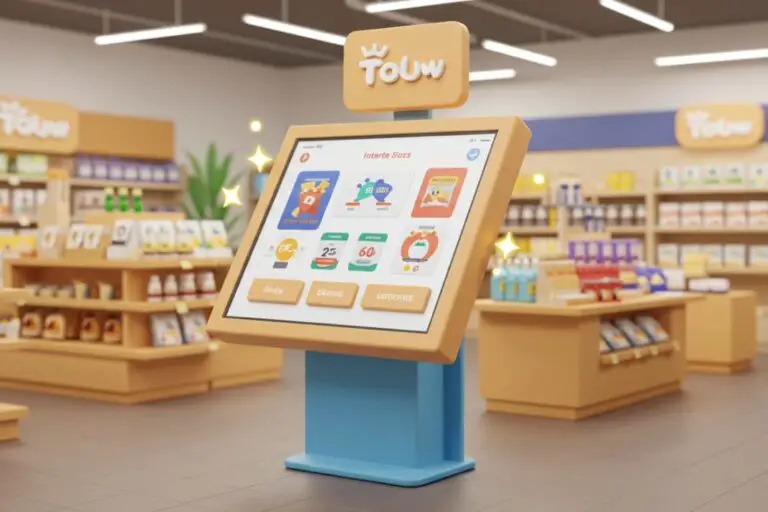Measuring success in B2B trade marketing is more critical than ever. Companies need to track their performance and use data to make better decisions to stay ahead. That’s where KPIs come in.
KPIs allow you to see how well you reach and engage other businesses, improving channel partnerships and driving long-term growth. Let’s get into the KPIs you need to measure and improve your B2B trade marketing with practical insights and trends.
Key Takeaways
- Lead-to-customer conversion rate is critical, with an average of 10% for B2B companies, but top performers aim for 15-20%
- Customer Acquisition Cost (CAC) and Customer Lifetime Value (CLV) are essential for measuring marketing effectiveness and long-term profitability.
- Marketing Qualified Leads (MQLs) and Sales Qualified Leads (SQLs) help align marketing and sales efforts, potentially increasing deal closure rates by 67%
- Trade promotion ROI and market penetration rate are crucial for assessing B2B marketing strategies and channel partner effectiveness.
- Customer-centric metrics like Net Promoter Score (NPS) and Customer Satisfaction Score (CSAT) provide valuable insights into brand perception and partner loyalty, which are essential for B2B marketing KPIs.
- Emerging trends include AI-driven analytics, blockchain in trade promotions, and sustainability metrics in B2B trade marketing.
Understanding Trade Marketing KPIs in the B2B Context
In B2B trade marketing, KPIs do more than just track sales – they give you a deeper understanding of many aspects of your marketing and sales.
From the strength of channel partnerships to the efficiency of distribution and the quality of long-term business relationships, they cover a lot of ground.

For example, while B2C companies might focus on consumer-based metrics, B2B trade marketers focus on partner satisfaction, channel conflict rates, and inventory turnover ratios.
These indicators help you evaluate how healthy your distribution network is and how well your trade marketing strategies are working.
Key B2B Marketing Metrics
Customer Acquisition Cost (CAC)
CAC is how much it costs to bring in a new customer or partner. B2B trade marketing includes marketing spending, onboarding, training, and support costs. Keep track of these costs to understand your overall marketing performance.

Action: To calculate your CAC, divide your total sales and marketing spend by the number of new customers acquired during a campaign. Break it down by channel to see which acquisition strategies are most cost-effective.
Average Deal Size
This metric shows the average value of a sale or partnership agreement. For B2B trade marketers, this is key to tracking over time and across different partner types or distributors.

Real-world example:
A manufacturing company found that their average deal size with small retailers was $10,000, and with large distributors, it was $100,000. Using this insight, they tailored their trade marketing to each segment and increased overall revenue by 25%.
Account Win Rate
The account win rate is how often a company wins deals with potential customers or partners. In B2B trade marketing, this is particularly useful when you break it down by partner type, deal size, or product category.

Tip: Aim for an account win rate of at least 30%. If you’re below that, review your partner’s qualification process and value proposition to see where to improve.
Customer Lifetime Value (CLV)
CLV is the total revenue a company can expect from a single customer or partner over the lifetime of the relationship. In B2B trade marketing, this is key to justifying the investment in partner support and development.

Action step: Calculate CLV by multiplying the average annual revenue per partner by the average length of the partnership, then subtract the costs of acquiring and maintaining that partnership.
Essential Trade Marketing KPIs
Lead-to-Customer Conversion Rate
This KPI tracks how many leads become paying customers or active partners. While the Corporate Finance Institute reports that B2B companies typically see a 10% conversion rate, top performers in trade marketing often aim for 15-20%.
Optimization strategy: Implement a lead scoring system that considers factors specific to trade marketing, such as a potential partner’s market reach, complementary product lines, and financial stability.

Marketing Qualified Leads (MQLs) and Sales Qualified Leads (SQLs)
In B2B trade marketing, MQLs might be potential partners who have shown interest in your distribution program, while SQLs are those the sales team believes are ready to sign a partnership agreement.
Case study: HubSpot found that companies excelling at lead nurturing generate 50% more sales-ready leads at a 33% lower cost. Apply this to trade marketing by developing targeted content for each stage of the partner journey.
Trade Promotion ROI
This measures the return on investment for trade promotion activities, an important aspect of B2B marketing KPIs. In B2B, this could include co-marketing initiatives, partner incentive programs, or trade show participation.
Action step: Use this formula to calculate Trade Promotion ROI: (Incremental Revenue – Cost of Promotion) / Cost of Promotion. Aim for an ROI of at least 3:1 for your trade promotions to ensure the success of your marketing team.
Market Penetration Rate
This KPI shows how much of the potential market a company has reached through its partner network. It’s crucial for identifying growth opportunities and assessing the effectiveness of your distribution strategy within your marketing campaign.
Tip: Segment your market penetration rate by region, product category, or partner type to identify areas for expansion or improvement.
Advanced Performance Measurement Techniques
Data Collection and Integration
In B2B trade marketing, data often comes from multiple sources, including CRM systems, partner portals, and distributor point-of-sale data. The key is the integration of all marketing activities to optimize results.
Action step: Implement a data integration platform to pull information from various sources into a single dashboard. This allows for more comprehensive analysis and faster decision-making.

A/B Testing in Trade Promotions
A/B testing in B2B trade marketing might involve comparing two versions of a partner incentive program or different co-marketing strategies.
Example: A software company tested two partner onboarding processes. Version A was a traditional week-long training, while Version B was a self-paced online program. Version B resulted in a 30% faster time-to-first-sale for new partners.
Predictive Analytics for Forecasting Outcomes
Advanced analytics tools can predict future trends based on historical data, helping businesses make proactive decisions in their trade marketing strategies.
Emerging trend: AI-driven predictive analytics forecast which partners are most likely to succeed, allowing companies to allocate resources more effectively.
ROI and Performance Impact
Return on Marketing Investment (ROMI)
ROMI measures the overall effectiveness of marketing spending, including trade marketing initiatives.
Calculation: ROMI = (Incremental Revenue Attributable to Marketing / Marketing Investment) x 100, helping B2B marketers evaluate their marketing performance.
Benchmark: Aim for a ROMI of at least 5:1 for your trade marketing efforts.

Gross Margin Return on Investment (GMROI)
GMROI focuses on the profitability of inventory investments, particularly in B2B trade marketing, where managing stock levels across a distribution network is crucial.
Formula: GMROI = Gross Margin / Average Inventory Cost
Tip: A GMROI greater than 1 indicates profitability, but aim for 3 or higher in most B2B sectors.
Pipeline Velocity
This metric tracks how quickly leads move through the sales pipeline. B2B trade marketing can help identify bottlenecks in the partner onboarding process.
Action step: Calculate your pipeline velocity and set benchmarks for each stage of the partner journey. Use these to identify where potential partners are getting stuck and optimize accordingly.
Customer-Centric Metrics
Net Promoter Score (NPS)
NPS measures partner loyalty and satisfaction. In B2B trade marketing, a high NPS can lead to more referrals and a stronger distribution network.
Best practice: Conduct NPS surveys quarterly and follow up with detractors within 48 hours to address concerns.
Customer Satisfaction Score (CSAT)
CSAT directly measures how satisfied partners are with your products, support, and overall partnership.
Tip: Break down CSAT scores by different aspects of your trade marketing program (e.g., product quality, logistics, marketing support) to identify specific areas for improvement in your digital marketing efforts.

Partner Churn Rate
This KPI tracks how many partners stop doing business with a company over time. A lower churn rate generally indicates stronger partnerships and more effective trade marketing.
Formula: Partner Churn Rate = (Number of Lost Partners / Total Number of Partners at Start of Period) x 100
Benchmark: While rates vary by industry, keep your partner’s churn rate below 5% annually.
Repeat Purchase Rate
In B2B trade marketing, this metric shows how often partners reorder or continue distributing your products, reflecting the effectiveness of your marketing activities. It’s a good indicator of partner satisfaction and product demand.
Action step: Segment your repeat purchase rate by partner type and product category. Use this data to inform your inventory management and partner engagement strategies.
Emerging Trends in B2B Trade Marketing Metrics
Blockchain in Trade Promotions
Blockchain technology is being explored for its potential to increase transparency and efficiency in trade promotion management.
Future outlook: By 2025, blockchain could be widely used to verify promotional outcomes and automate partner payments based on predefined smart contracts.
Sustainability Metrics
As sustainability becomes a key consideration for many businesses, B2B trade marketers are starting to track metrics related to the environmental impact of their distribution networks.
Example metric: Carbon footprint per unit distributed through partner channels.

AI-Driven Personalization
Advanced AI enables highly personalized partner experiences, from customized dashboards to AI-recommended trade promotion strategies.
Case study: An electronics manufacturer implemented AI-driven personalization in their partner portal, resulting in a 40% increase in partner engagement and a 15% boost in sales through their distribution network.
Conclusion: Actionable Steps for Optimization
- Audit your current KPIs: Evaluate which metrics you track and identify gaps based on the KPIs discussed in this article.
- Implement data integration: Invest in tools that can pull data from various sources into a single dashboard for comprehensive analysis.
- Set benchmarks: For each KPI, establish industry-standard benchmarks and set ambitious yet achievable goals for your organization.
- Regular review cycles: Establish monthly or quarterly review meetings to analyze KPI performance and adjust strategies accordingly.
- Embrace emerging technologies in your digital marketing strategies to enhance overall performance. Explore how AI, blockchain, and other innovations can enhance your trade marketing effectiveness and KPI tracking.
- Focus on partner experience: Use customer-centric metrics to improve your partner relationships and drive mutual success continually.
Concentrating on these KPIs and keeping up with new trends can improve your B2B trade marketing strategies and foster sustainable growth through your partner network. Remember, success depends on measuring and taking decisive steps based on the knowledge gained from these crucial metrics.




